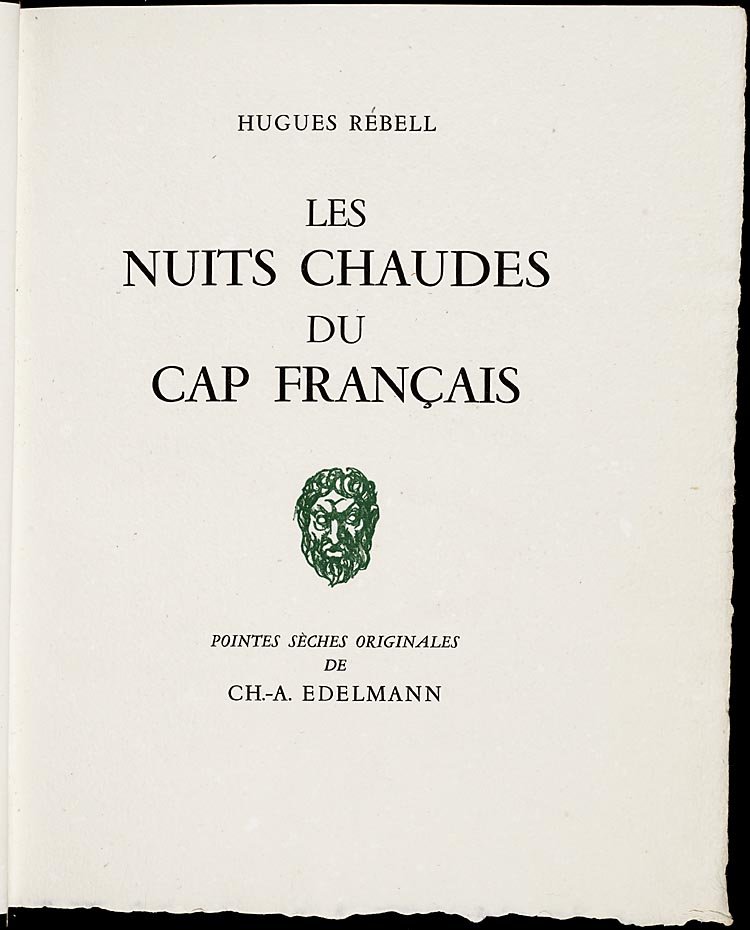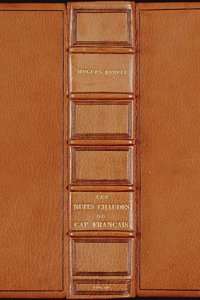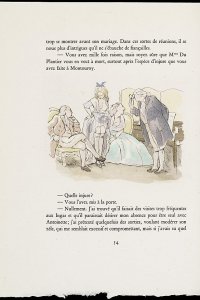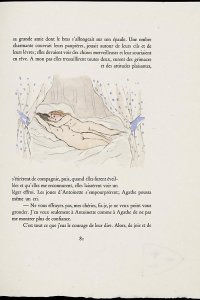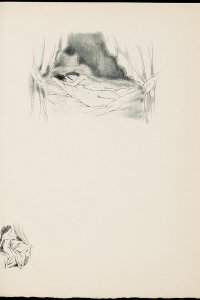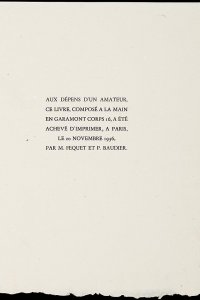Les nuits chaudes du Cap français
Year: 1936
Author: Hugues Rebell (1867 - 1905)
Artist: Ch.-A. Edelmann (1879 - 1950)
Publisher: Fequet et Baudier
The creation of Les nuits chaudes du Cap français was difficult. When his publisher Boès announced its publication, another publisher (Maison d’art, owned by Paul Derniot and Paul Redonnel) wrote that it had previously acquired the rights to the book, and Maison d'art threatened to sue. Boès told Rebell that he wasn't pleased about this. The author- who was still frantically writing, deleting and correcting - found a financier to pacify the duped publisher Maison d'art. The book, in which daring subjects such as female homosexuality, flagellation and sex with minors and black women were featured, was hardly reviewed and didn't sell very well. This gave Boès reason not to publish the sequel that had already been announced. There was one positive review, which praised the author and his other works, besides the book itself: the same fire burned in all his novels, which were written with the same passion, as if possessed. The reviewer called him a natural storyteller, but it made no difference. The book was to be his final publication, and he died three years later under miserable conditions, but still retaining his library, which he had always held on to.
Racy and timeless
Hugues Rebell was long forgotten. By now, his native city of Nantes has named its annual literary award after the writer: the Prix Hugues Rebell. Marius Boisson noted that Rebell's legacy consists largely of unreadable notes for libertarian works. A select circle of admirers remained familiar with his work, and one of them had Les nuits chaudes published 'aux dépens d'un amateur' (paid for by an admirer) in a way that is representative of deluxe book editions in France before World War II: somewhat 'timeless', with illustrations in various states, printed in a limited edition. The dry-pointsby Alsatian painter Charles-Auguste Edelmann also satisfy expectations: elegant and racy, perhaps a little too innocent, in view of the text's perverse nature. He was especially good at quick sketches of figures in well-chosen lines, and he therefore illustrated a large number of novels and stories. The Koopman Collection contains eleven works that he illustrated, including novels by Octave Mirbeau and Joseph Kessel.
Other illustrated editions of Rebell's Les nuits chaudes are also included in the Koopman Collection. Hermine David produced small, handsome, square, coloured dry-point sketches in 1927, with no more than three nudes. Henriette Bellair produced lithographs and Jean Vital Prost made the wood-engravings for a 1939 edition. These illustrations, which were meant to be racy (especially the wood-engravings) have a tendency towards the cartoonish.
The Edelmann edition from 1936 consists of 300 numbered copies, of which the first 25 copies contain appendices on unnumbered pages: 36 first-state dry-needle etchings on Chinese paper, 34 in the final state on Marais rag paper, 34 in the final state and in colour on the same paper, and 34 design etchings on Lana rag paper. One of the original copperplates has been included on the inside of the upper cover. This is copy number 8, with the copperplate for the illustration on page 173.
Bibliographical description
Description: Les nuits chaudes du Cap français / Hugues Rebell ; pointes sèches orig. de Ch.-A. Edelmann. - [S.l.: s.n.] (Paris: Fequet et Baudier), 1936. - 192 p. : ill. ; 34 cm
1st edition: 1902
Printer: M. Fequet et P. Baudier (Paris)
Edition: 300 copies
This copy: Number 8 of 50 on Isle de France
Typeface: Garamond
Note: With four additional sets of the illustrations on Chinese paper, Marais and Lana; With original copperplate
Bibliography: Accoord CR-185 ; Monod 9502
Shelfmark: KW Koopm A 9
References
- Accoord C.R.: Een keuze uit de bijzondere aanwinsten verworven tijdens het bibliothecariaat van dr. C. Reedijk. 's-Gravenhage, Koninklijke Bibliotheek, 1986
- Marius Boisson, Hugues Rebell, intime. Paris, Seheur, 1930
- Hubert Juin, Écrivains de l’avant-siècle.Paris, Seghers, 1972
- Thierry Rodange, Le diable quitte la table ou La vie passionnée d'Hugues Rebell. Paris, Mercure de France, 1994
